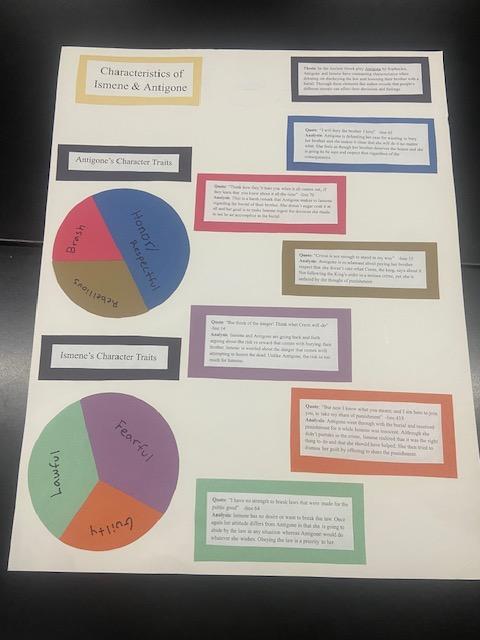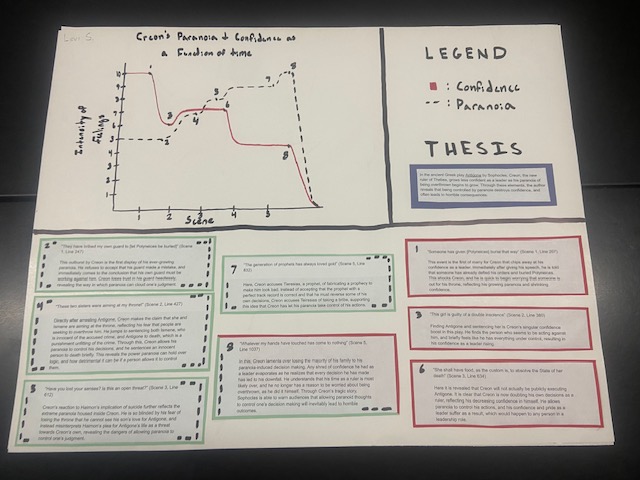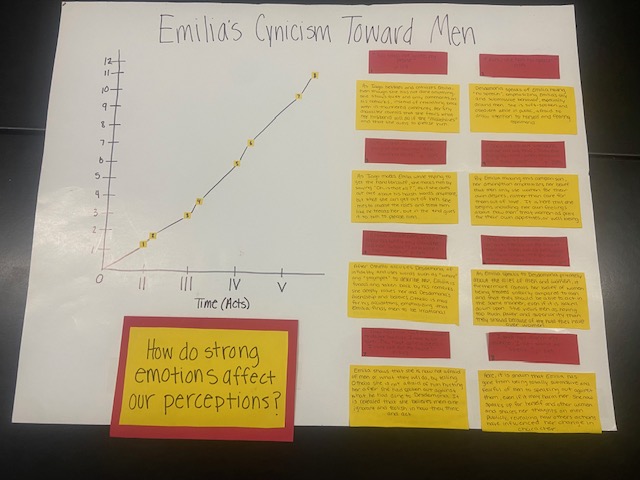Read. Annotate. Discuss. Write an essay. Rinse and repeat. Sometimes the most direct path is the best path. My classroom is often “un-instagramable.” However, with some units, I want to provide students with new ways to show what they know. I want to help my students see how different elements in a major work build together to create an interpretation. I want to allow my students to be creative and design a tangible product. Literary graphs combine the rigor of an essay while allowing students to create visual connections between intangible elements and a work’s meaning.

What is a literary graph?
- Students select two elements in a text and design a graph (line graph, bar graph, pie chart, etc.) that depicts the relationship between these two elements.
- Different graphs work best for different concepts. For example, if something changes over time, a line graph is best. If something is finite, a bar graph works well. For elements that have multiple pieces within an element, students can use a pie chart.
What are the steps of facilitating this process?
- The first time we create literary graphs, I give my students a list of options. In future units, students will have to generate their own topics. (Antigone and Creon’s Pride Over Time, Haimon’s Respect for His Father over Time, Ismene and Antigone’s Respect for the Laws of Man VS the Laws of the Gods)
- Then, I give students a sheet of white paper to sketch out their initial design.
- Next, students begin collecting data in the form of quotes from the text. They can type and print or handwrite these.
- After collecting and plotting their data, students should begin crafting commentary that connects the individual data points to their graph’s overall thematic focus. How do these elements work together to create meaning?
- Students can then add creative elements to their graph.
- Finally, have students write a response that explicitly states the relationship between the elements graphed and how these elements develop the meaning of the work. For me, the first time students just write a thesis. Later, I build students into a paragraph or more.

Any other suggestions or tips?
- Plan for several days to complete this task. My students generally need at least four days, ideally spanning a weekend.
- The day the graphs are due, I have students share these graphs one one-on-one. They line up in two lines, with one line rotating and the other staying stationary. This share out happens before the Q3 Essay.
- Show students examples from different literary works to illustrate the concept. I have provided some pictures below that you are welcome to use as you collect your own!
- In the past, I have done some small graphing assignments with the whole class before asking them to create a graph independently. (Desiree’s Love for Armand VS Armand’s Love for Desiree, Walter Younger’s Mental Stability over Time.)
- I do provide students with a poster board. Have some materials on hand (Index cards, construction paper, glue sticks, a bowl to trace pie charts, rulers, and markers.) Embrace the chaos.
- Feel free to adapt and use any of the included rubrics or instruction sheets for your own classroom.


At the end of the year, I ask students to complete a survey, including a question that asks “If Ms. Antoon only kept one assignment next year, what does she have to keep?” Almost universally students say the literary graph. Literary Graphs give students the opportunity for productive struggle and connect verbal-linguistic intelligence to visual-spatial skills. Literary graphs help students see the complex interactions between abstract concepts and a work’s interpretation. And they won’t even realize they essentially just wrote an essay.
.png)






.png)
